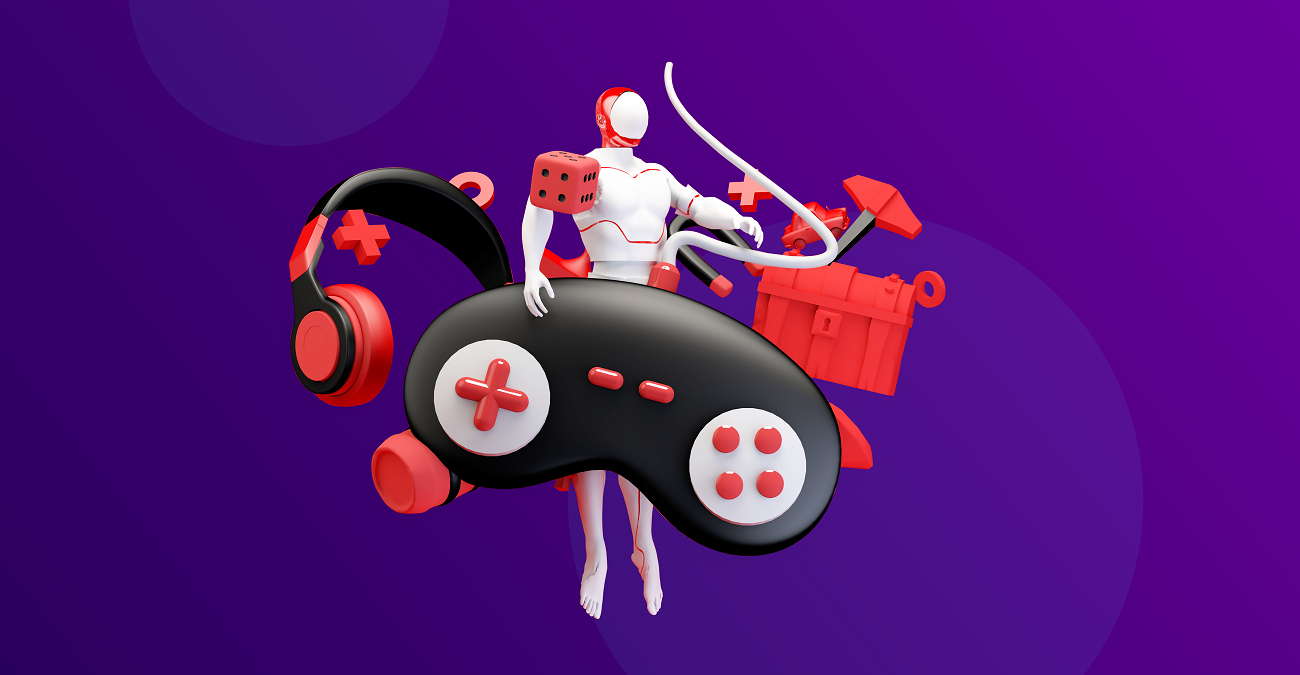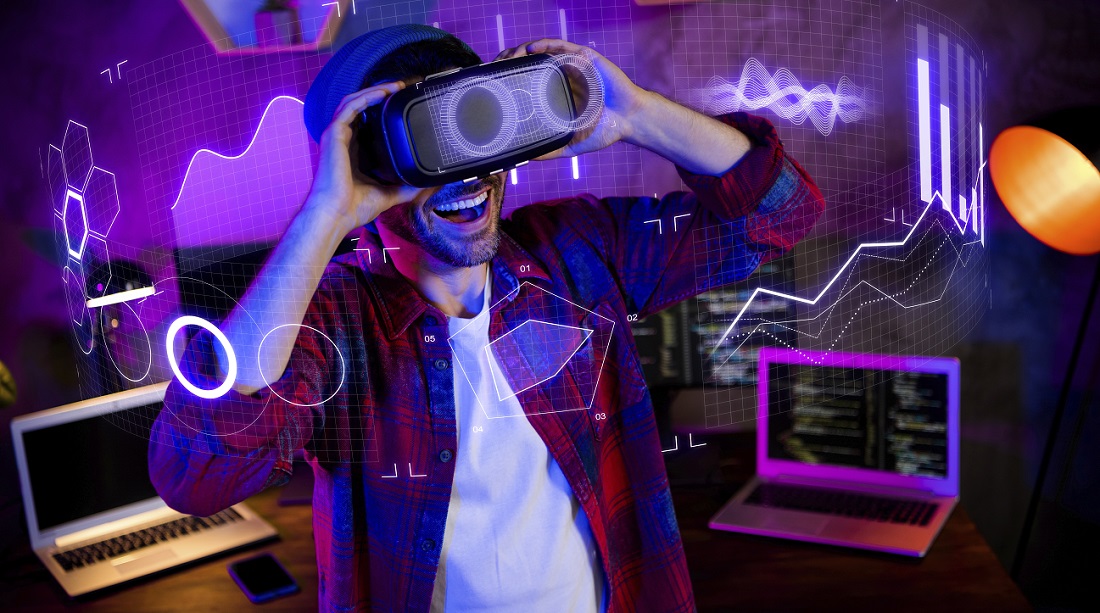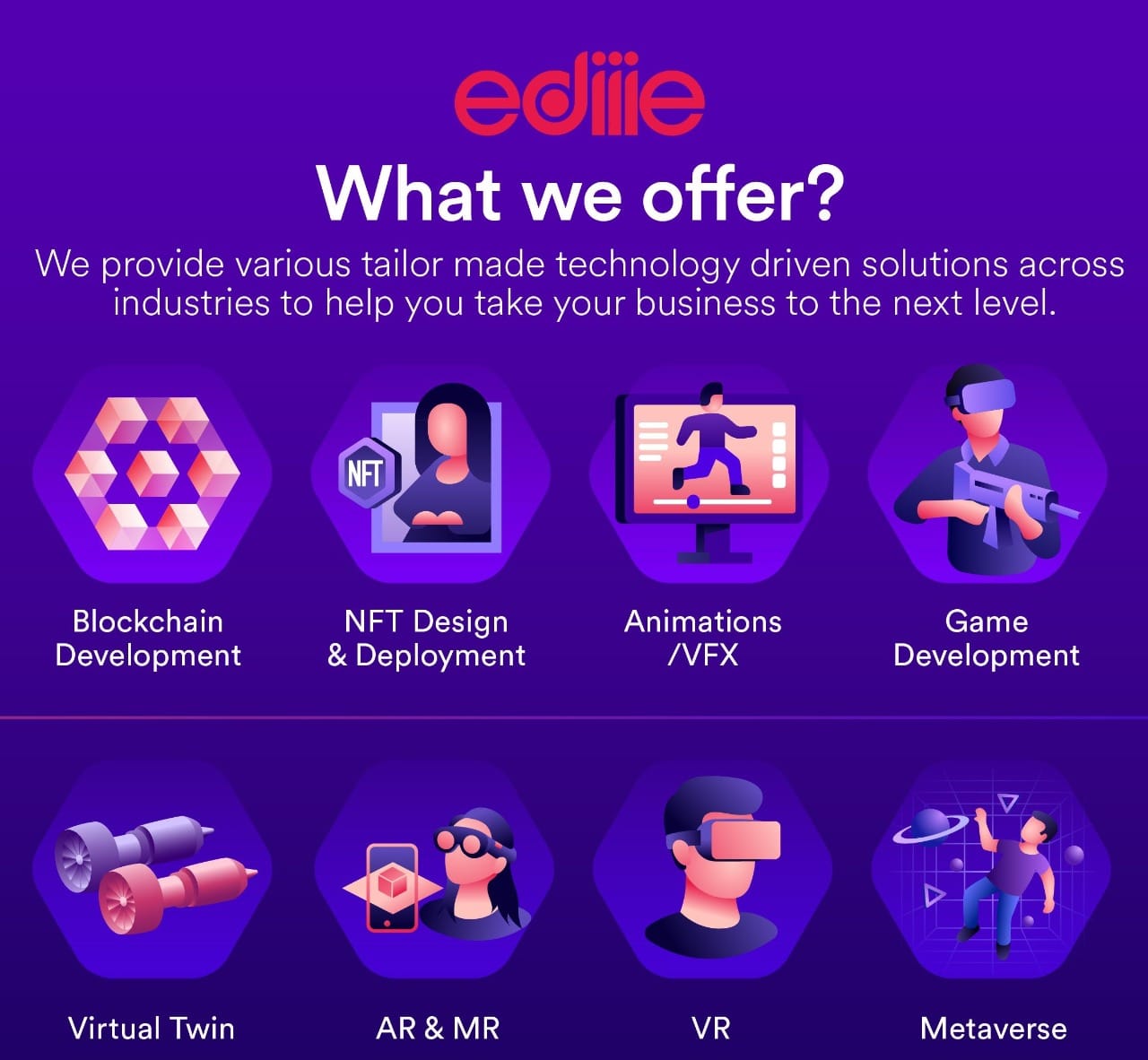Gaming Intelligence: Integrating AI into Game Development
Nearly every facet of game development as we know it today, has seen various levels of changes over the years. Everything from animation to coding and making scripts – has improved and still continues to do so, as digital technologies improve.
New hardware and software developments have had a profound effect on the state of game design as we know today.
And it is somewhere along those lines is where we will also place artificial intelligence. Similar to AR VR in gaming, AI in game development is another revolutionary component of the game design journey and it deserves its day in the sun like any other.
It has been a part of the scene ever since a few years and it’s certainly seen some improvements along the way as any other technology.
How is AI Used in Game Development?
Ask any gamer worth their salt, and they’ll tell you what makes video games the perfect medium for visual entertainment and storytelling. Look at VR in gaming: Video games have come a long way from pixelated sprites and slow or clunky animations.
It now boasts studio-grade animations and entertainment, often coupled with voice acting and motion capture done by popular artists – where companies developing games offer dynamic storytelling and increased realism to gamers.
And it would be right to say that AI in gaming is another tool, another scalpel in the arsenal of developers to push the envelope with what they want to create their next experience. Especially if they want to create one of the top AR games anyone has seen.
Let’s take a look at some of the ways in which AI is used in game development:
1. Following Rules
This type of AI in game development is made to follow rules or predetermined instructions. It is used to either influence or lay down the ways in which a non-player character in the game will respond or behave.
It can be seen in situations where a character in a game is made to follow certain paths or engage in certain activities as per the conditions.
For instance, the hit Rockstar video game Grand Theft Auto 5 uses this type of AI in game development which is bound to following rules.
Players can see this manifest in the in-game traffic which sees cars with civilians driving around in set manners.
They roam around smoothly, without disrupting the game and adding to GTA’s overall atmosphere.
2. Taking new Paths
NPCs in video games come in different varieties. Some are friendly, some are the player’s foes and some just stand around to exist and add to the game.
Depending on the game or the genre, these NPCs need to move around in the game which enables them to perform certain actions. AI in game development is used in this manner to help them move around, by enabling what’s known in gaming terms as ‘Pathfinding.’
Pathfinding is important in many types of games. Stealth games like Assassin’s Creed are an excellent example. Where guards or enemies that might detect the main player, walk around and navigate the streets and walls of forts.
They may not always take a set route, but their movement is guided by AI and pathfinding allows them to stay a constant source of annoyance for the players.
3. Different Behaviors
AI in game development might often see different types of AI uses being combined together to add higher levels of complexity to a video game. This is a more complex procedure for game developers and when done right, results in more realistic behaviors in NPCs and other in-game elements.
Enabling different behaviors in this manner might also be set to certain conditions in game so as to improve the dynamic level of gameplay for players.
An example of this where AI in game development leads to different behaviors amongst NPCs could be of the widely popular game ‘Red Dead Redemption 2.’ RDR2 implements an in-game ‘honor’ system for the main character used by the player.
Depending on how high or low it is, the NPCs in the game are friendlier or colder to the player. They may greet the character less, charge him more money for the same items, set the law on them for small misdemeanors, etc.
4. Change of ‘State’
All NPCs that one sees in a game can be programmed to have different states in which they exist at all times. Using AI in game development, these states can be coded to having certain conditions in the game met for them.
Depending on what triggers a specific state, they will exist in only one state at a time. But this might change if the character is so programmed where their actions are linked to their current state. Kind of like with blockchain game development and locked states.
AI in game development and its impact on the state of NPCs and other characters in a game can be seen best in games like Dark Souls. Here, enemy characters or NPCs that populate certain stages or parts of the game – exist in various states depending on their interaction with the player.
Normally, they might exist in a dormant state where they are loitering in a spot. Upon being provoked or attacked, they can switch to a state of ‘attack’ and later even return to their original state after the player has exited the spot or died in-game.
5. Machine Learning
AI in game development also enables developers to set up and use machine learning algorithms within the game. Machine learning in games is a mechanism that relies on AI to help either the game or the characters inside – such as the NPCs, to evolve and learn as they go.
It learns mainly from the actions of the players, and then use what it has learned to adapt its behavior to provide a unique and thrilling experience. Quite useful, as one can see for something like Metaverse game development.
An example of using machine learning through AI in game development would be how the enemies work and react in Naughty Dog’s Uncharted 4 game. During fight sequences, enemies dynamically learn from the player’s current behaviors and adapt their next moves.
They become more aggressive or passive depending on that, such as flanking the player or flushing him out using grenades.
So there you have it. These are some of the types of AI used in game development. As AI evolves, new applications and ways in which the games are made, might get introduced, such as blockchain in gaming.
And developers can discover new ways of using the strengths of artificial intelligence in creating stories and experiences that are immersive, dynamic and more engaging.
Adapting to Challenges: Applications of AI in Games

It is only the recent years and gaming trends that many apart from the average gamer, have opened up to the possibilities of storytelling that comes from video games.
Because of the vastness of this industry, all the types and genres – and each game basically reinventing the tried and tested formulas of success, the video game industry has become one of the most dominant forces in the entertainment industry.
Almost $243 billion in this year alone. Now we know how already how AI is being used in game development. Here are some applications of AI in games that’s propelling this industry:
1. Developing NPCs
AI may be utilized for developing Characters that are more lifelike and harder to interact with. One can see AI in game development being used to teach NPCs from the player's activities or to alter their strategy in reaction to the player's actions.
This is important in games where NPCs play a major role, like in stealth and action games. And players will often have memorable experiences with NPCs, given that they have been made with meticulous care.
2. Employing Game Balance
Balancing video games and certain aspects of it such as the skill level, resources available, etc. is a good way in establishing to gamers that they are both tough and fair.
For example, AI in game development may be used to modify the complexity of a game according to the player's proficiency level.
If a player is stuck at a certain level or not being able to progress past a checkpoint, they might be offered a chance to skip. Or the game might automatically adjust certain factors to make it easier for them to continue.
3. Enhancing Graphics
AI in game development is also one of the ways available to developers who want to improve game aesthetics and animation. For instance, artificial intelligence can be used to generate more realistic face emotions or more complicated and dynamic animations.
This is very important for games that are more story-bound such as Telltale games or the hit horror games ‘The Dark Pictures Anthology.’ In which, the facial animations and how the NPCs visually react is very important and can be improved using AI.
4. Generating Procedural Content
Artificial intelligence may be utilized to produce procedural material such as levels, missions, and adversaries. This can aid in the development of videogames and can help make them more ‘re-playable’ and diverse.
Most developers might overlook this aspect of using AI in game development but re-playability is different from playability.
It is the reason why many games stay installed longer on devices of users, as they keep returning to re-experience certain moments of the game. Aspects which can be generated procedurally using AI to keep things fresh and unique for the users.
5. Personalized Experiences
AI in game development holds a lot of promise for allowing developers in customizing games, making each player's experience unique. AI can, for example, be used to propose material to users or to change the complexity of a video game depending upon what they like.
A personalized experience can stem from a variety of factors within the game.
It might be something as simple as the dialogue options available in an RPG. Or, it might be in the different reactions coming from an NPC character. All in all, these things can be programmed to rely on AI and make smart choices in delivering a personalized experience to video gamers.
6. Immersive Moments
Finally, a major facet of using AI in game development, rests on the fact that it has the potential to generate greater immersion and realistic game experiences.
Something as simple as building virtual assistants that aid players with chores can be set up by developers to be automated using AI. Or to make realistic sound and visual effects.
Owing to machine learning, its application can pan out with much confidence from the developers who can rest assured of the effectiveness of AI in their games. This will make it easier to reach immersive moments and allowing users to experience a game world that feels more alive.
These are some important examples of the kind of applications of AI in games that developers can expect. They have been used to make all sorts of video games, spanning across different genres and platforms.
And new applications of artificial intelligence such as generative and conversational AI are bound to further enhance how companies create video games.
Benefits of using AI in Games: The Nvidia Example
The tech and software company Nvidia is one of the most important examples of our time about espousing the benefits of AI in games. It has been synonymous with video games for an immense portion of its history and is today, leading the charge when it comes to utilizing AI in game development.
Though it’s stellar at mastering game marketing, but Nvidia’s use of AI is not just for video games, but also the use of AI computing in various other fields. Let’s take a look at the benefits Nvidia has brought to video games, for both developers and users:
DLSS: DLSS of Nvidia, known as ‘Deep Learning Super Sampling’ is a proprietary tech that is enabled by the use of Nvidia’s graphic cards and software. Specifically, the RTX series cards.
It is an excellent example of using AI in game development as it relies on artificial intelligence algorithms and methods for image scaling. DLSS upscales images from a lower-resolution to a higher resolution in video games.
Frame Generation: Frame generation of NVIDIA is an even newer technology that has been quite popularly received by the gaming community.
Available for the 40 series RTX graphic cards of Nvidia, it uses AI to generate new frames and inserts them cleverly between two actual frames during gameplay or cutscenes.
It is a technology that holds massive potential as AI in game development and appreciated by both developers and gamers.
Both of these technologies are important examples of how AI has become quite beneficial in games – all the way from the production phase to how they are experienced.
These technologies are helping companies make games that are immersive and enjoyable for their audiences. Here are some benefits of DLSS and Frame Generation in leveraging AI in game development:
Increases Frame Rate: Both DLSS and Frame Generation are a godsend for gamers as they are useful in increasing the in-game frame rate of video game titles.
They are being utilized by video game developers today for this specific use as it can ensure a smooth and impactful gaming experience for users with slower hardware.
This is an important benefit of using AI in game development enabled by Nvidia for the gaming community.
Improves Image Quality: Apart from helping frames get generated quicker and faster than conventional methods, both DLSS and Frame Generation have also improved the image quality.
That’s because when implemented by game developers, the technology is programmed to use AI in reconstructing images intelligently. In a way that ignores artifacts and other annoying graphical issues that result from conventional upscaling techniques.
Enhances Other Features: As if the above two benefits aren’t reason enough, DLSS and Frame Generation are also a godsend in helping game developers experiment and improve on other features.
Features such as implementing RTX or high-resolution textures, etc. These features might normally be a chore for the average gamer’s PCs but by leveraging these AI powered technologies, it becomes possible for users to experience them as intended.
Embrace the Future of Artificial Intelligence in Game Development
As with many technologies and advancements in the world of hardware and software, video games have been at the forefront of adopting them and leading the way.
Based on what we’ve learned above, AI in game development is just one of the many ways video games have continued to champion this symbiotic relationship.
The future of AI in games is bright, with the possibilities of newer and smarter – immersive experiences. And a lot of potential to explore as game developers, for their creative fingertips.
If you’re a game developer looking at ways to integrate AI for game development, then our team’s got you covered. As a Unity 3D game development company, we have worked extensively on deploying AI models and tools in video games.
And would love to hear from you about your new ideas or help you with an existing project. Reach out to us at EDIIIE for a quick consult. And let us show you how you can be a part of the AI revolution seizing the gaming industry.






